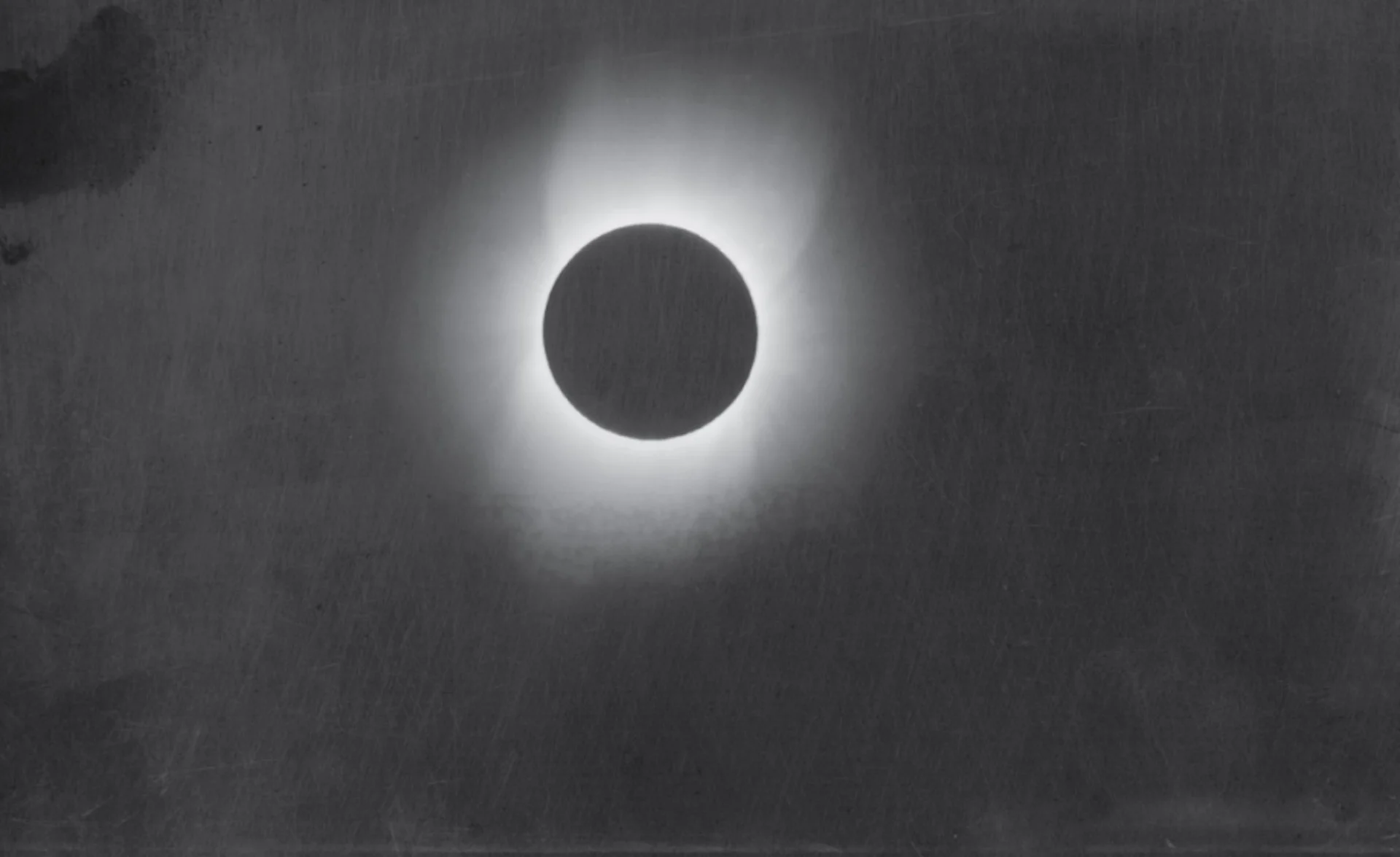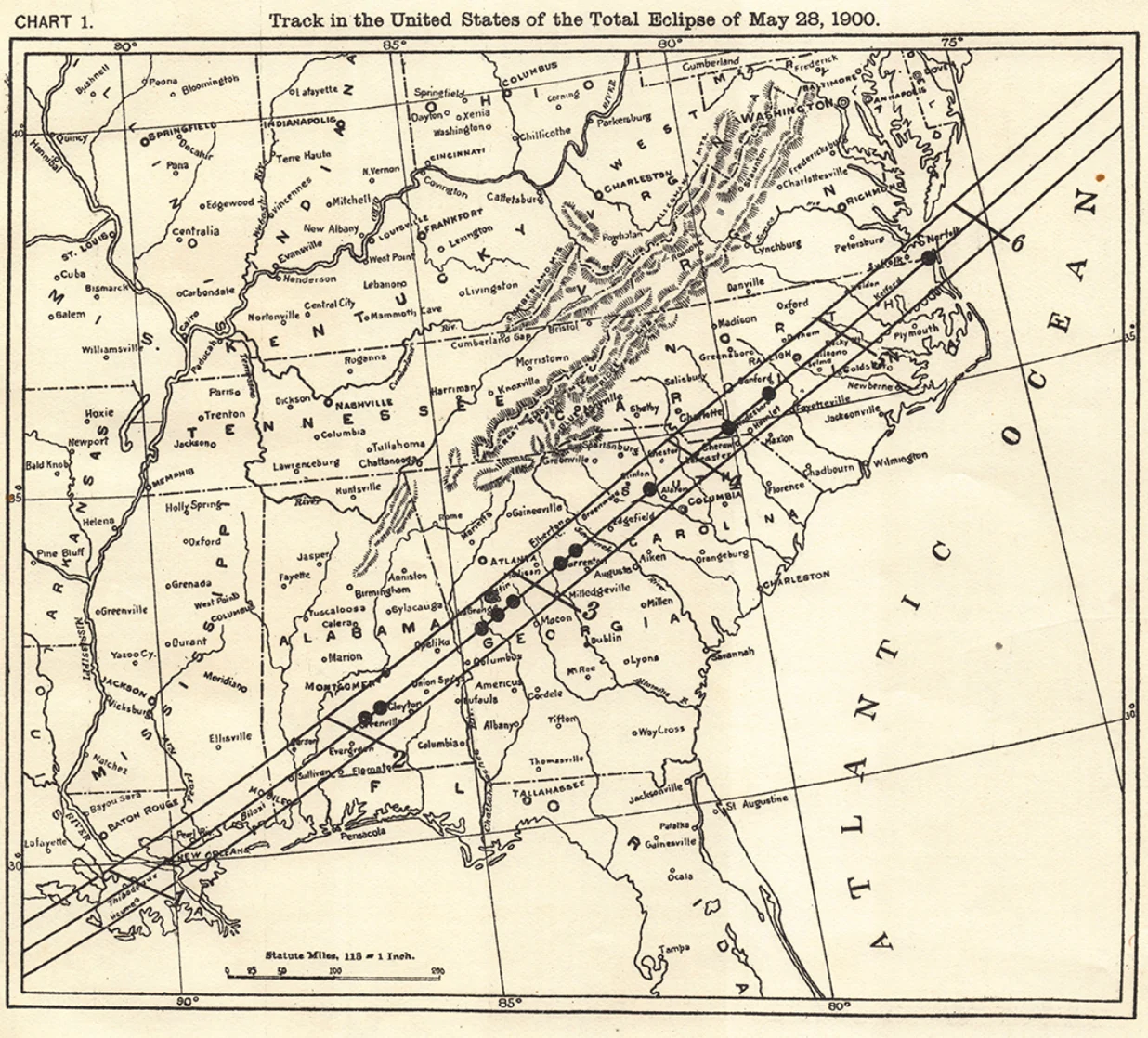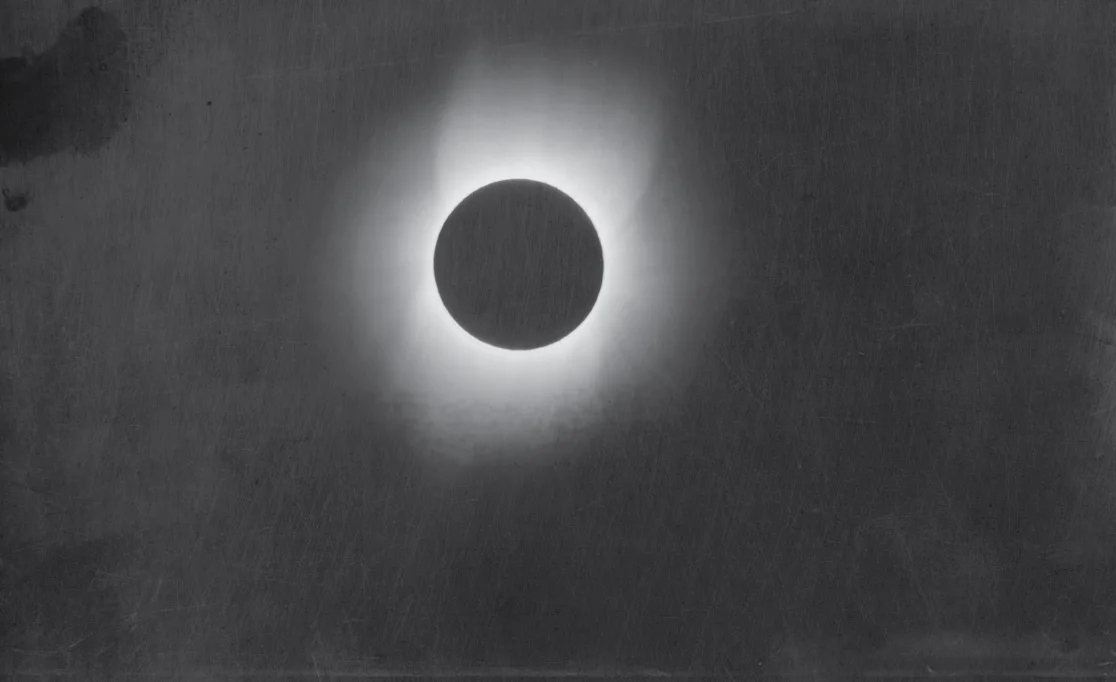
1900 total solar eclipse was one of the first scientifically studied
On this day in weather history, scientists gathered to observe a total solar eclipse.
This Day In Weather History is a daily podcast by Chris Mei from The Weather Network, featuring stories about people, communities and events and how weather impacted them.
--
On Monday, May 28, 1900, a total solar eclipse was visible for people across the southeastern United States. Although the moon fully obscured the sun for only one to two minutes, scientists were able to gather lots of significant data.
Thousands of people went to witness the rare event, including scientists and volunteers who were ready to document their observations. This was one of the first collaborative efforts to see how an eclipse impacts Earth's atmosphere.

"Map showing track in the United States of the total eclipse of May 28, 1900." Courtesy of NOAA
Scientists wanted to investigate phenomena like the solar corona and the eclipse’s shadow bands. They wanted to see the eclipse in its totality so they decided that South Carolina would be the best and clearest viewing area.
A team, led by the U.S. Weather Bureau, headed to Newberry, S.C., to view the event. And the team was correct, it was a perfect area to view the total solar eclipse.
“Never in astronomical history had a total eclipse of the sun been observed under more favourable conditions,” said an Alabama Weather Bureau observer.
In total, 62 Weather Bureau stations each document 25 sets of observations. They documented the same set of data before, during, and after the eclipse. They recorded information like barometric pressure, temperature and vapour pressure.

Courtesy of Smithsonian Institution/Wikipedia
From these observations, scientists revealed some interesting conclusions, including the temperature drops 3°F to 4°F during a solar eclipse, the event caused winds speeds to decrease by about 1.60 km/h, and vapour tension decreased making it a bit more humid.
These observations allowed scientists to learn more about how the Earth’s atmosphere; understanding how it absorbs and radiates the energy from the sun.
To learn more about the 1900 total solar eclipse, listen to today's episode of "This Day In Weather History."
Subscribe to 'This Day in Weather History': Apple Podcasts | Amazon Alexa | Google Assistant | Spotify | Google Podcasts | iHeartRadio | Overcast'
Thumbnail: Courtesy of Smithsonian Institution/Wikipedia









